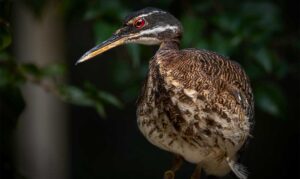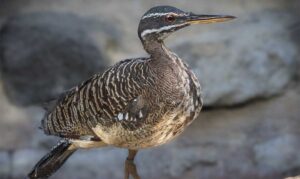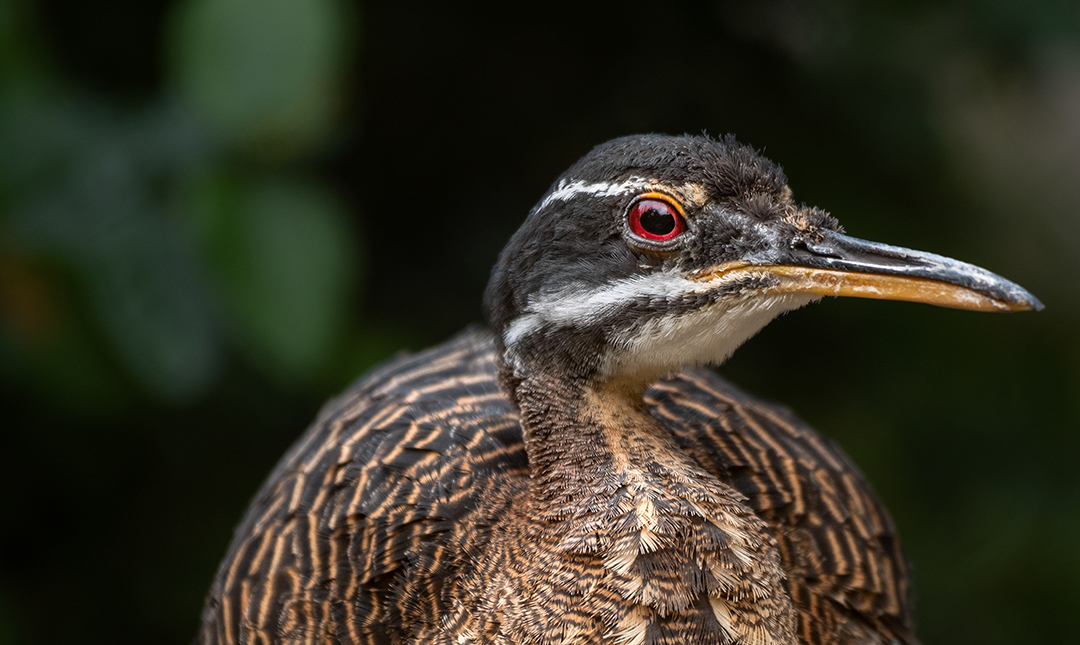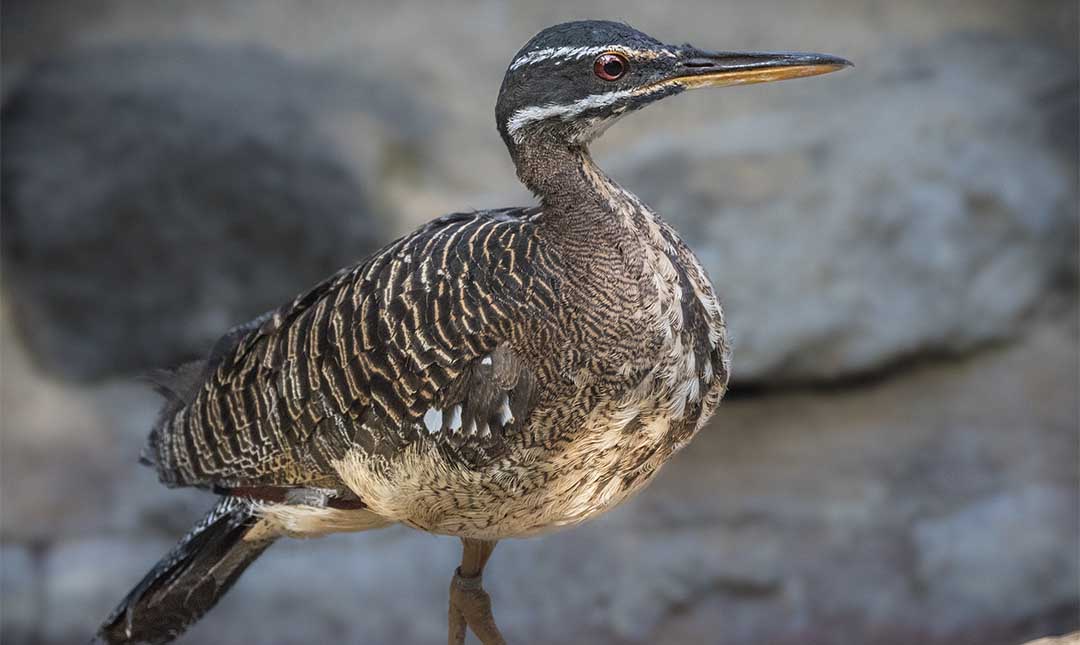About
Sunbitterns are wading birds native to Central and South America. Though it resembles a short-legged heron, its closest living relative is actually the kagu, a ground dwelling rainforest bird from New Caledonia located in the South Pacific. DNA suggests their connection dates back to a common ancestor who inhabited the ancient supercontinent of Gondwana 180 to 550 million years ago.
Sunbitterns are generally solitary, though sometimes found in pairs. They rarely fly, spending most of their time walking slowly on the ground, their heads bobbing as they patiently search for prey. They forage among rocks or in vegetation along the stream banks. Their long toes distribute their weight and make it easier to walk in the muddy rainforest. They also have a short hind toe that has been adapted to grip branches when the birds perch. Sunbitterns’ cryptic coloration makes them inconspicuous most of the time, but when they spread their wings, an incredible sunburst pattern is revealed. Looking like two large eyes, this pattern makes them appear larger than they are—a display that is used to intimidate potential adversaries rather than as part of a courtship display. When a predator approaches, parent birds may pretend to have broken wings in order to divert attention away from the nest.


Habitat
Sunbitterns are found in neotropical forests near streams in Central America and northern South America.
Diet
This bird’s diet consists primarily of insects, small frogs, and aquatic invertebrates, including crayfish, crabs, and shrimp.
Physical Characteristics
Adult sunbitterns measure 18 to 21 inches in length. They typically weigh between six and nine ounces. The lifespan of sunbitterns in the wild is unknown, but in human care they can live about 15 years. The oldest sunbittern on record resided at Smithsonian’s National Zoo and lived to be 33 years old.



